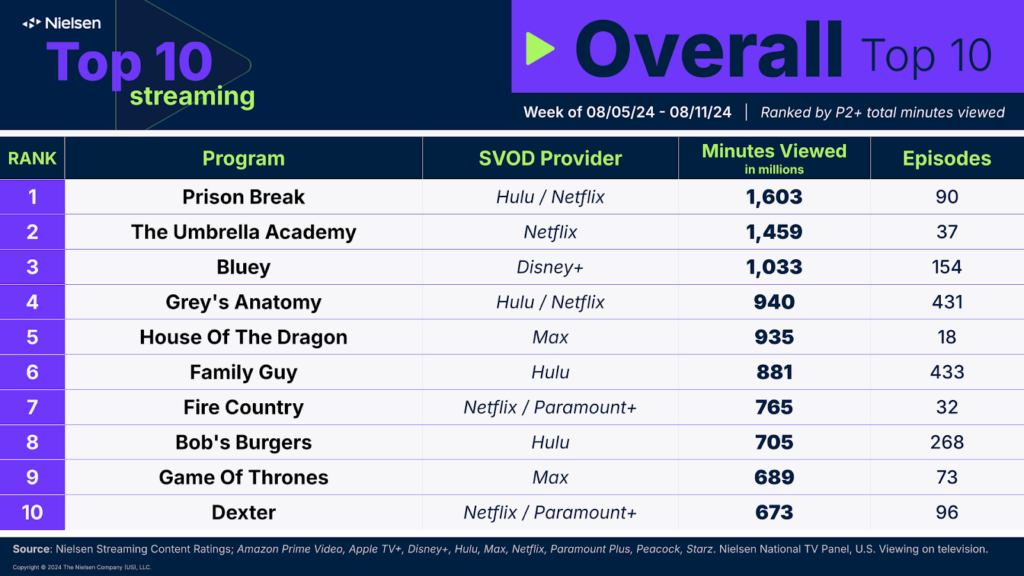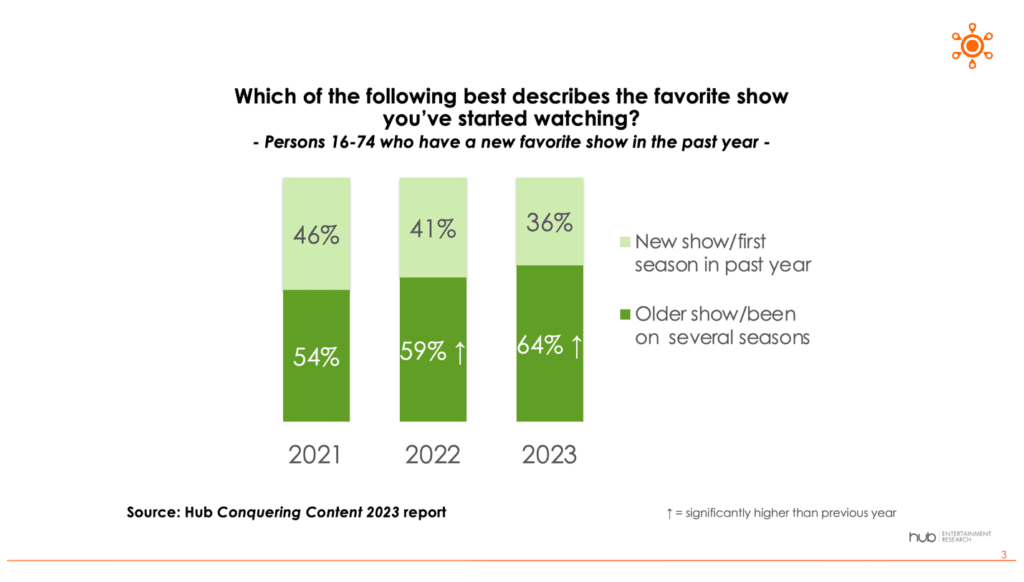This is the first part of a two-part series. Part 2, “Where Should I Distribute My Content? Navigating the Content Distribution Landscape,” will explore how media companies can balance licensing, exclusivity, and hybrid distribution strategies to maximize reach and profitability
The resurgence of older shows like Prison Break on Netflix, which saw a 111% climb in viewership seven years after its revival, is part of a growing trend where legacy content finds new life on streaming platforms. This phenomenon, also seen with Suits and other classic series, underscores the critical importance of content distribution in a crowded streaming landscape. Media companies must decide between licensing their content to platforms like Netflix or keeping it exclusive to their proprietary streaming services, weighing the pros and cons of each approach.
The Rise of Older Shows on Netflix
The Suits phenomenon is repeating itself on Netflix with the resurgence of Prison Break. According to Nielsen data, Prison Break, originally aired in 2005, has become the latest licensed title to experience a significant surge in viewership. During August 5-11, Prison Break accrued 1.6 billion minutes of streaming time, marking a 111% increase from the 758 million minutes it amassed the week prior. Despite the series being off Netflix’s servers for seven years and still available on Hulu, the “Netflix Effect” has dramatically boosted its popularity.

This trend mirrors the success of Suits, which gathered 130 million hours of streaming time in June 2023, just a month after arriving on Netflix. The “Netflix Effect” refers to the platform’s ability to reignite interest in older shows, giving them new life through its massive user base and sophisticated recommendation algorithms. Netflix’s global subscriber base of 278 million allows legacy content to reach audiences that may have missed its original broadcast, helping older shows find renewed relevance and popularity.
A 2023 survey by Hub Research highlights this trend: 64% of viewers aged 16-74 who found a new favorite show in 2023 chose an older series with multiple seasons available, with many explicitly citing Suits. Only 36% selected a new series as their favorite, emphasizing the value of legacy content on streaming platforms like Netflix.

Historical Synergy Between Networks and Netflix
The successful relationship between Netflix and the networks dates back over a decade. AMC Networks is once again leveraging the “Netflix Effect” to drive viewership for a significant portion of its lineup. In a recent deal, 13 series from AMC’s portfolio will be added to Netflix, continuing the strategic partnership that previously boosted viewership for shows like Breaking Bad, The Walking Dead, Mad Men, and Halt and Catch Fire. This deal will bring prior seasons of these shows to Netflix, starting on August 19, with additional titles slated for early 2025.
AMC’s confidence in this partnership is rooted in past success, particularly with Breaking Bad. After debuting on Netflix, Breaking Bad saw its linear viewership on AMC rise substantially, demonstrating how Netflix can be a catalyst for reigniting interest in shows that may have lost steam. Kristin Dolan, CEO of AMC Networks, stated, “We believe this significant expansion of our Netflix relationship will drive viewership and engagement on Netflix while raising awareness and interest in our award-winning content on AMC-branded and partner platforms.”
However, network executives didn’t always view this arrangement as strategically sound. Michael Pachter, managing director of equity research at Wedbush Securities, explained recently how media companies initially miscalculated the long-term impact of licensing their shows to Netflix. “Netflix pulled the wool over the eyes of media companies,” Pachter said, noting how some networks were quick to license hit shows to Netflix, helping it grow into the global streaming behemoth it is today. He pointed out that Leslie Moonves, former CBS chief, would offer Netflix programs as soon as their seasons ended, while Richard Plepler, former HBO chief, chose to keep HBO’s content exclusive. HBO’s model proved more adept at reducing audience churn by keeping shows exclusive and maintaining long-term viewer interest.
This divide in licensing strategies between networks illustrates the critical decision that media companies face today: partner with Netflix to boost visibility or maintain exclusivity to drive long-term value for their platforms.
Why Older Shows Are Seeing Success
Several factors contribute to the recent resurgence of older shows on streaming platforms like Netflix:
The Comfort of Nostalgia in Uncertain Times
In times of uncertainty, viewers often turn to familiar content for comfort. Shows like Prison Break and Suits offer a sense of stability and nostalgia, reminding audiences of simpler times when they first aired. This desire for familiarity is amplified when societal changes, economic fluctuations, or global events drive a need for escapism. Revisiting older series allows viewers to reconnect with beloved characters and storylines, providing emotional reassurance during challenging periods.
High-Quality Storytelling That Stands the Test of Time
Classic shows enjoy ongoing success due to their timeless storytelling. Series like Prison Break and Breaking Bad exemplify high-quality narratives that captivate audiences years after their original release. These shows feature intricate plots, compelling character arcs, and masterful execution, transcending their initial broadcast periods. Their enduring appeal proves that great storytelling never goes out of style, attracting both old fans and new viewers alike.
New Audiences Discovering Classic Content
Streaming platforms like Netflix allow older shows to be rediscovered by entirely new audiences. Younger generations who missed these series when they originally aired can now experience them for the first time. The ease of access through global platforms allows viewers to binge-watch entire seasons at their convenience, creating a deeper connection to the long-form storytelling these classic series offer. This immersive viewing experience contributes to the sustained popularity of legacy content.
The Content Distribution Dilemma for Media Companies
As Netflix continues to dominate with its library of licensed legacy content, media companies face a critical question: Where should I distribute my content? Should they license their hit shows to platforms like Netflix, gaining immediate revenue and visibility, or keep content exclusive to their own streaming services to attract subscribers?
Some companies, like Sony Pictures, have taken an “arms dealer” approach by licensing content to Netflix and avoiding the cost of developing their streaming services. However, this strategy has its downsides, including potential cannibalization of proprietary platforms, reduced exclusivity, and loss of control over audience data.
This decision becomes increasingly complex as more media companies struggle to balance revenue, subscriber growth, and platform investment. Part 2 of this series will explore how media companies can navigate this intricate landscape, exploring the benefits and risks of various content distribution models, including hybrid strategies.







